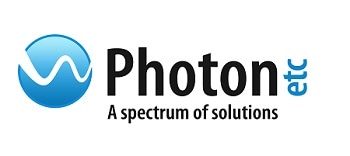The quest for flexible, low-cost, and easy to process photovoltaic materials has headed in a new direction over the last few years, with the rapid development of organometallic perovskite solar cells. This novel class of photovoltaic materials is expected to overpower silicon, a most commonly used material for photovoltaic applications, thanks to its exotic characteristics. They have strong absorption in the visible and tunable band gap and high carrier mobility, making them a potential material to fabricate cost-effective solar panels.
Low stability and inferior current life time are the major drawbacks of this new star of photovoltaics. Their current life time is roughly 2000 solar peak hours as opposed to ~52 000 hours of silicon in bright sunlight. In-depth knowledge about the degradation mechanisms and photophysics of these novel photovoltaic materials is crucial for their commercialization.
Photon etc’s Global Hyperspectral Imaging Platform
The key insights into the exotic properties of perovskite materials can be efficiently acquired by scientists using Photon etc’s global hyperspectral imaging platform (IMA™). The IMA™ is capable of characterizing the structural properties of 2D and 3D perovskite crystals and entire photovoltaic devices by making optical measurements. The IMA™ acquires images wavelength after wavelength, providing spectrally resolved transmittance and luminescence maps over large areas of 100 x 100 µm2 - 1 x 1 mm2 with a superior spatial resolution (~µm) but without the need for any spatial scanning.
Experimental and Results
The hyperspectral data of perovskite crystals acquired using the IMA™ is presented in this article. The study was carried out in close cooperation with Prof. David Cooke (McGill University) and Prof Mercouri Kanatzidis (Northwestern University). The hyperspectral PL data of a perovskite is presented in Figure 1. A million PL spectra were collected over an area of 670 x 900 µm2 from 550-900 nm with a step size of 1 nm within a few minutes. Figures 1a and 1b depict two different monochromatic PL images captured at 625 nm and 750 nm, respectively. The different spectral features and a map of the emission peak shift obtained over a particular region can be observed on Figure 1c and Figure 1d, respectively.
.png)
Figure 1. Hyperspectral photoluminescence data acquired with IMA™ (532 nm excitation laser). (a) Monochromatic PL image at 625 nm, (b) monochromatic PL image at 750 nm, (c) PL spectra extracted from different regions on the sample (see corresponding colored arrows on (a)), (d) map of the PL shift.
A different perovskite sample’s hyperspectral transmittance data over an area of 180 x 134 µm2 is presented in Figure 2.
.png)
Figure 2. Hyperspectral transmittance images taken with IMA™. (a) Monochromatic transmittance image at 610 nm, (b) monochromatic transmittance image at 840 nm, (c) transmittance spectra extracted from different regions on the sample (see corresponding colored arrows on (a-b)).
The PL data obtained over the same area like the one shown in Figure 2 is illustrated in Figure 3. The spectral features of the specific areas of Figure 3a is shown in Figure 3b, while Figure 3c shows a map of the emission peak shift over the same field of view. The results clearly demonstrate the ability of the IMA™ to acquire the entire spectral content of the perovskite crystal over a large area within a few minutes. The structural features of the crystal can be easily observed.
.png)
Figure 3. Hyperspectral photoluminescence images acquired with IMA™ (532 nm excitation laser). (a) Monochromatic PL image at 770 nm, (b) PL spectra extracted from different regions on the sample (see corresponding colored arrows (a)), (c) map of the PL shift.
Conclusion
Hyperspectral global imaging provides rapid access to the spatial distribution of surface defects, phase segregation, grain boundaries, and disorder. This efficient technique helps to perform an in-depth analysis of perovskite microstructure, enabling knowledge to be gained about the degradation phenomenon in these materials. This knowledge is vital to realize the commercialization of this novel photovolatics technology.

This information has been sourced, reviewed and adapted from materials provided by Photon etc.
For more information on this source, please visit Photon etc.